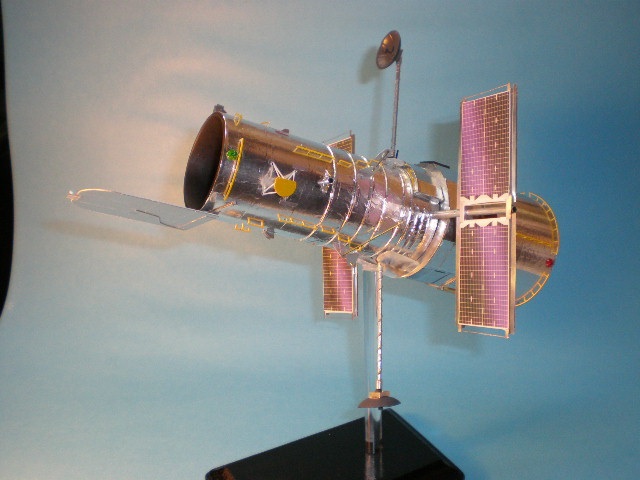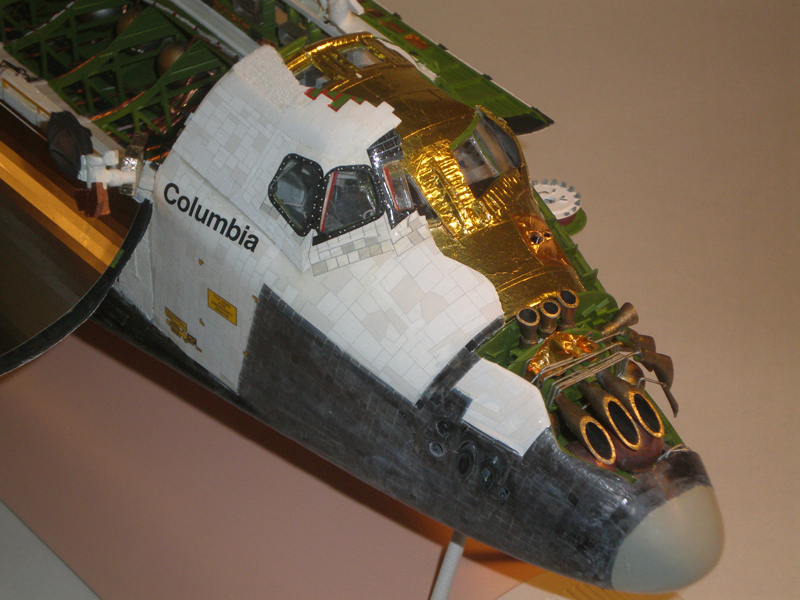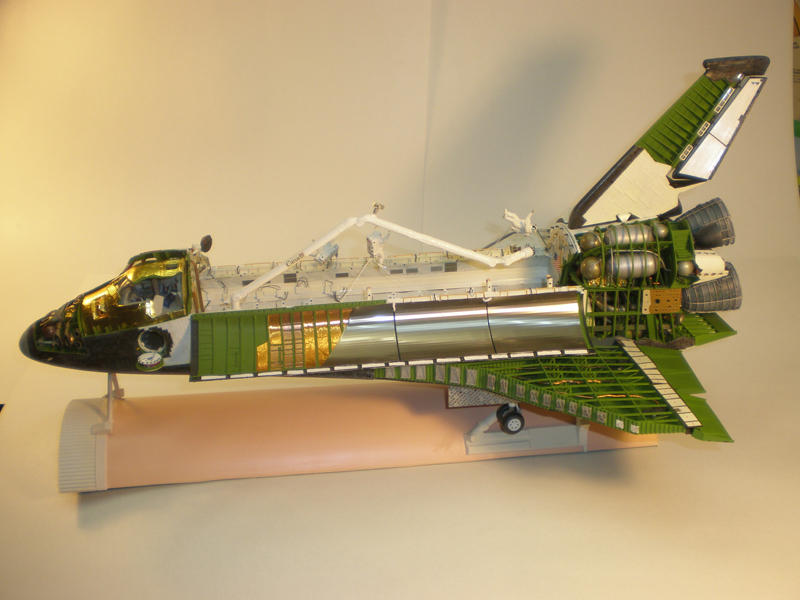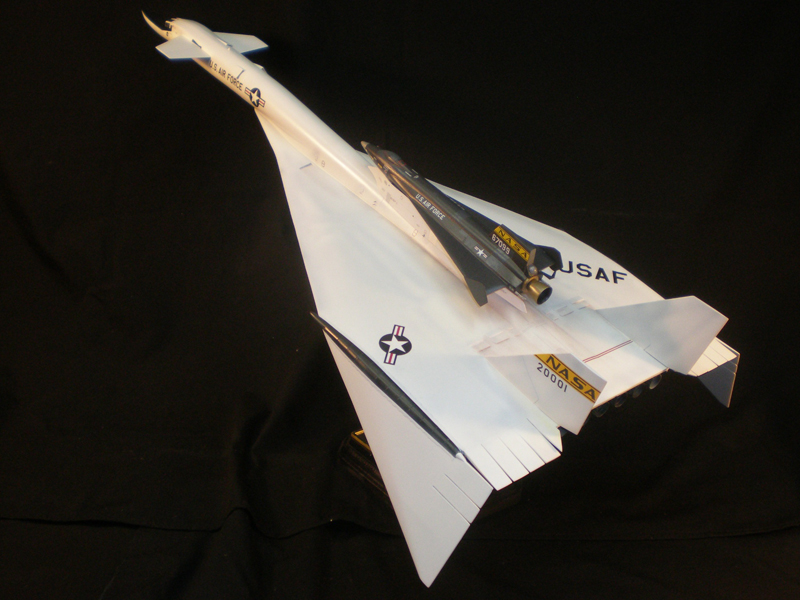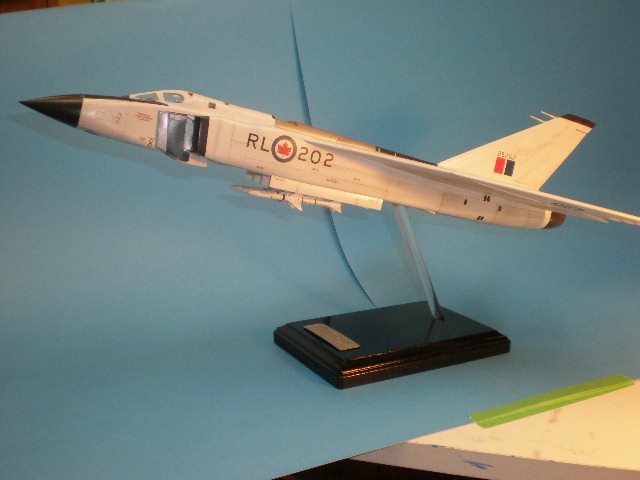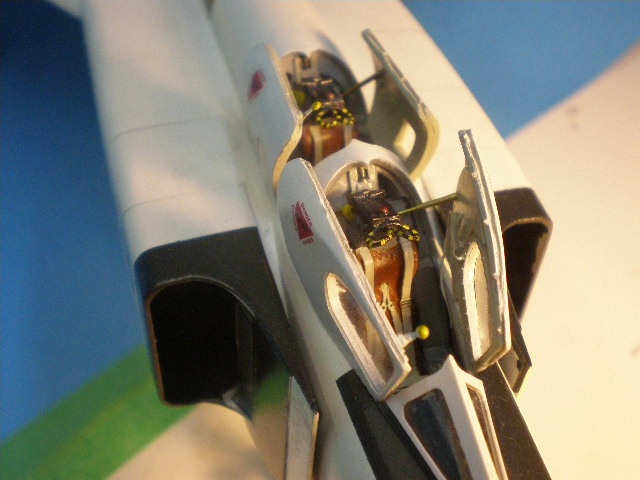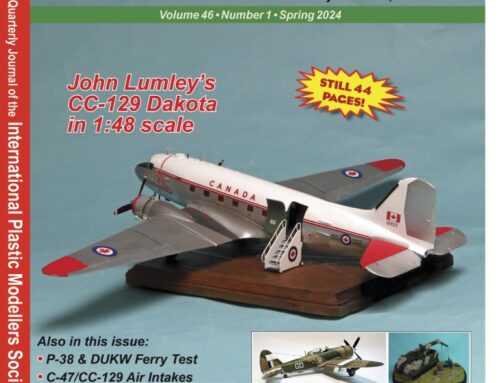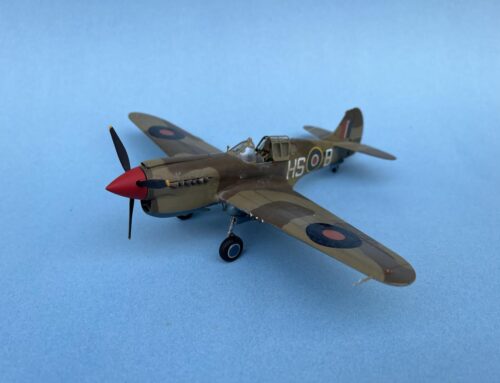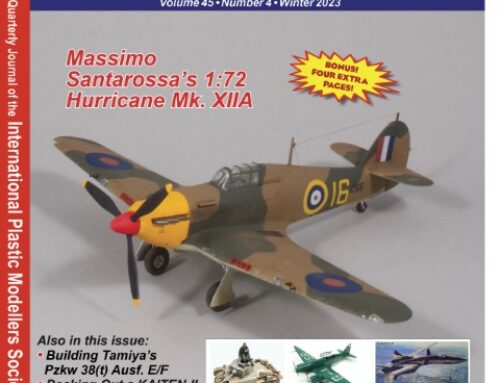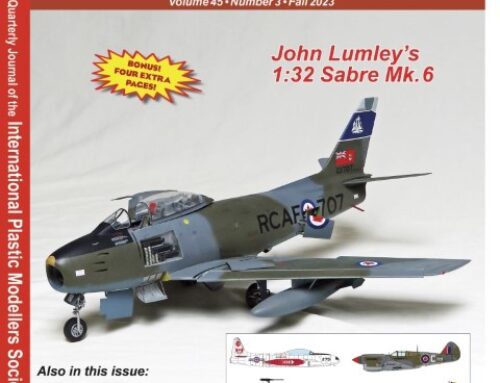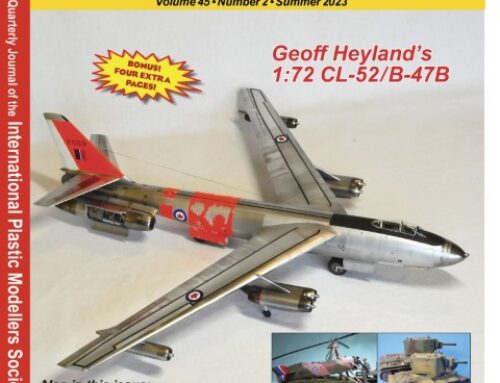Pete Malaguti, of St. Catharines, Ontario, brings his sensibility and skill as a Technical Illustrator to the field of modelling. Although only active for the last 3 1/2 years, he can successfully blur the distinction between art and craft in the practice of his hobby. Below, some thoughts he has shared with IPMS Canada on his motivation and experience.
I started modelling in November 2007 … and as I’ve always had a huge interest in the US Manned Space Program, decided to build a couple of kits I’ve had for years. With the wealth of information available via the Web, this was a perfect time to start up. When I was a kid, I built model kits, mainly Revell Spacecraft models. Man hadn’t landed on the moon yet and I was intensely interested in every launch, every manned mission. I still have the LIFE magazines and National Geographic magazines from then. But my models were really poorly built. Literally built in a Saturday afternoon and playing with ’em in the tub that night!
Not knowing about IPMS or the Canadian branch, not realizing contests were held locally, let alone the existence of model-related websites, or contests or even something more than slapping two fuselage halves together …… I had a steep learning curve. I joined IPMS Canada in 2009. My stash now consists of about 20 kits. ( I really don’t know how, or why, some of you guys collect so-o-o-o many unbuilt kits! )
Working as a Technical Illustrator for over 30 years, and creating for instance, exploded views of Aircraft engines, or Cutaway views of Rapid Transit vehicles, allows me the thought process to create cutaways in styrene. And I’ve gotta tell you, it’s an extremely satisfying result looking at a 3D model in my hands and not on a computer screen. To get my hands working, along with my atrophying mind again, is well worth the time and effort I put into building a model. I’ve begun to really enjoy augmenting a kit thru scratch building . Finding, and using found items, or brass, or discarded plastic containers and using them in the construction of a model, is a lot of fun too. And where I thought, just a year or so ago, that 50 hours was a lot of time to spend on one model, I’ve now spent over 900 hours and 14 months on one model, the Space Shuttle Cutaway. So my boundaries are moving too. And I consider my modeling skills to be about at a novice level. And with this Shuttle model, I’ve learned a heckuva lot about constructing with styrene. Plus, I’ve learned another lot of information about this space vehicle.
My CF-105 Arrow diorama was another learning experience for me. I learned a whole whack about the Arrow and the Iroquois engine. I built many of the components from scratch, displayed it in a diorama setting that I hadn’t seen anywhere before. And I can only hope, that when viewers look at my model, they’ll be encouraged to do some research, and reading, about this Canadian designed and built aircraft. I also built another Arrow with the Sparrow missiles deployed … something I had not seen anywhere before, either. All told, I’ve built about 20 scale models in the last 4 years …all of them built to explore a different technique … whether it’s masking and painting, gluing brass to styrene, filling and sanding, stretching sprue, making homemade decals, applying aluminum foil or some other skill. And I still haven’t got to the stage where I feel that I’ve done the best I can … my models are still a little rough, and that’s just fine with me. They look just fine from about 2 feet away! My goal is to give an impression of the vehicle, rather than replicate every little detail. I’d rather just give an indication of detail, let the viewer’s mind fill in all the details. Much like an Impressionist painting … where broad brushstrokes represent fine details.
I don’t prefer a particular scale … I’d rather just read up and research a particular subject and build that vehicle … whether it’s 1/144, 1/72, or 1/24 makes no difference to me. And I’m sure that once I’ve built the ones that interest me, I’ll move on to another past-time. I guess I get more satisfaction out of learning about the craft … whether it’s an X-15 or Satellite or an Apollo era Lunar Module. The building of it merely reinforces the aspect I’ve just learned about.
I’ve participated in a few contests, the local ones in Southern Ontario like Ajax, London, Hamilton as well as BuffCon, a couple of NorEastCons and the 2009 NATS in Columbus Ohio. My models have won over 30 awards, including three 3rd places at the NATS. While this is nice, it doesn’t matter to me if these models win awards. My goal is to spark an interest, to show these actual vehicles, as accurately as I can. I’ve seen way too many Real Space models that were poorly built, and not representative of the actual vehicle and as a result, this category doesn’t get any respect from IPMS and various scale model contests. If I can raise the awareness in this category, then I’ll be a happy man.
I can only hope that my models (some of them currently displayed in the local Fort Erie library [ March 2011] as well as at Model Shows), will help to inspire the younger set to get interested in scale modeling, as opposed to computer oriented past-times … but judging by the age of the attendees at various model shows, I can only hope.
1/72 Monogram Space Shuttle-Cutaway
I used the Monogram Space Shuttle as the foundation for this cutaway. I’ve had an interest in the American Manned Space Program since the beginning, and I want to see how these vehicles were designed and built. And the Space Shuttle Orbiter holds that same interest. To practice some scratchbuilding, I built the SSMEs (Space Shuttle Main Engines) about 3 years ago with the intent of doing an entire Orbiter. I started the research aspect, and I must admit, got quite intimidated by the complexity of this piece of hardware. But in the fall of 2009, I decided to build it over the winter. I figured 5 months would be plenty!
It wasn’t!
It took close to 900 hours ( I stopped counting at 300 hours!) over 15 months to complete, at least 2,000 bits of styrene, resin, aluminum foil, aluminum printer plate and wire. I also utilized an aftermarket set from Real Space models for the Radiator panels, KuBand antenna, SSME engine bells and the Canadarm, … although I did accurize the Canadarm too. My own homemade decals were used a lot too!
There are a myriad of details in this model. Lotsa scratchbuilding, for instance … the entire Crew Module, Flight Deck, and mid-deck, the Payload Bay, the aft Structure, Port wing, Elevons, Body flap, Forward RCS (Reaction Control System) and much, much more.
This was a huge project for me, but I learned a heckuva lot about model building … not to mention about the Space Shuttle too.



